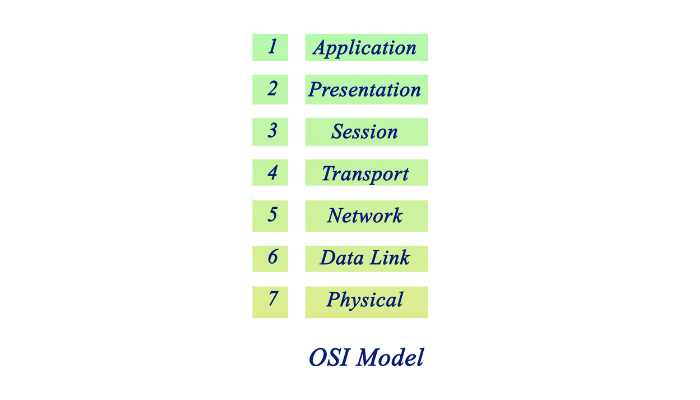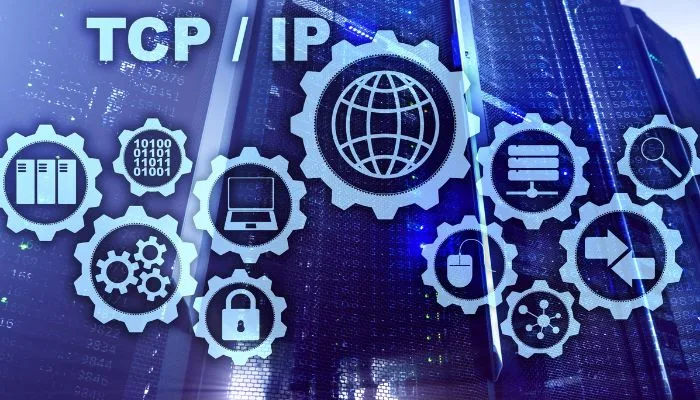What is a network protocol?
A network protocol is a set of rules and conventions governing communication between devices in a computer network. It defines how data is transmitted, received, and processed across the network. These protocols ensure that data is transmitted reliably and consistently, regardless of the devices’ make, model, or manufacturer. They define how data should be formatted, transmitted, received, and interpreted, making it possible for diverse devices to communicate effectively.
Computers and other devices wouldn’t be able to communicate with one another if not for network protocols. Without specialized networks designed for a specific architecture, the Internet as we know it would cease to exist. Network protocols are relied upon by the vast majority of the network’s end users.
How network protocols work
Network protocols work by establishing a standard format for data exchange and providing guidelines for error detection, correction, and data flow control. They ensure that devices can understand and interpret the information being transmitted, regardless of the hardware or software they use.
Network protocols function as the language of the digital world. They enable devices to understand each other’s requests and respond accordingly. When you click a link, send an email, or stream a video, network protocols come into play, ensuring your data reaches its destination accurately and in the right order. Think of them as the traffic rules of the internet, keeping everything flowing smoothly.
OSI model
The OSI (Open Systems Interconnection) model is a conceptual framework that defines the different layers involved in network communication. It helps in understanding how protocols interact and function within a network.

The layers of the OSI model are:
- Physical layer: This layer deals with the physical transmission of data through electrical, optical, or wireless signals.
- Data Link layer: This layer ensures reliable data transfer over the physical layer by handling error detection and correction.
- Network layer: The network layer is responsible for addressing, routing, and forwarding data packets across different networks.
- Transport layer: This layer ensures the reliable delivery of data by providing error detection, flow control, and congestion avoidance mechanisms.
- Session layer: The session layer establishes, manages, and terminates sessions between applications.
- Presentation layer: This layer is responsible for data representation, encryption, and compression to ensure compatibility between different systems.
- Application layer: The application layer provides services and protocols for user applications to access the network.
Learn more about What is OSI model & 7 Layers Explained
TCP/IP model
The TCP/IP (Transmission Control Protocol/Internet Protocol) model is another widely used networking model that predates the OSI model. It is the foundation of the modern internet.

The layers of the TCP/IP model are:
- Network Interface layer: This layer is responsible for the physical transmission of data, similar to the physical and data link layers of the OSI model.
- Internet layer: The internet layer handles the addressing, routing, and fragmentation of data packets over different networks.
- Transport layer: This layer provides reliable, connection-oriented data transfer using protocols like TCP and connectionless data transfer using protocols like UDP.
- Application layer: The application layer includes all the protocols that enable communication between applications running on different devices.
Learn more about What is TCP/IP Model and how it Work?
Types of Network Protocols
Network protocols can be categorized based on their functions and usage. These categories include:
- Communication Protocols: These protocols facilitate communication between devices, ensuring data is transmitted accurately and reliably.
- Routing Protocols: Routing protocols determine the optimal path for data to travel from source to destination in a network.
- Internet Protocols: These are the protocols that govern how data is transmitted over the internet, including IP, ICMP, and BGP.
- Transport Protocols: Transport protocols like TCP and UDP manage the flow of data between devices, ensuring it arrives intact and in the correct order.
- Application Protocols: Application-layer protocols define the rules for specific services and applications, such as email (SMTP), web browsing (HTTP), and file transfer (FTP).
Which protocols run on the network layer?
The network layer is a critical component of the OSI and TCP/IP models. It is responsible for addressing and routing data packets as they traverse a network. Notable network layer protocols include:
Internet Protocol (IP): The cornerstone of Internet communication, IP assigns unique addresses to devices and routes data between them.
Internet Control Message Protocol (ICMP): ICMP handles error messages and diagnostic functions, crucial for network troubleshooting.
Routing Information Protocol (RIP): RIP is a distance-vector routing protocol used in smaller networks.
Open Shortest Path First (OSPF): OSPF is a link-state routing protocol suitable for larger, complex networks.
What other protocols are used on the Internet?
The internet relies on a multitude of protocols to function seamlessly. Some of the most prominent internet protocols include:
Transmission Control Protocol (TCP): TCP is a connection-oriented protocol that guarantees reliable data delivery.
User Datagram Protocol (UDP): UDP is a connectionless protocol ideal for applications where speed is more critical than reliability.
Border Gateway Protocol (BGP): BGP is vital for routing data between autonomous systems on the internet.
What protocols do routers use?
Routers play a pivotal role in directing data traffic within and between networks. To accomplish this, they use a range of protocols, including:
Interior Gateway Protocols (IGPs): IGPs like OSPF and RIP help routers determine the best path for data within a single network.
Exterior Gateway Protocols (EGPs): BGP is an EGP that manages routes between different autonomous systems.
What protocols do switches use?
Switches are crucial for local network communication and rely on specific protocols, such as:
Spanning Tree Protocol (STP): STP prevents network loops in Ethernet networks by creating a loop-free logical topology.
Virtual LAN (VLAN): VLANs enable network segmentation, allowing switches to isolate traffic based on criteria like department or function.
What protocols do Servers use?
Servers handle various tasks in a network, and the protocols they use depend on their functions. Common server protocols include:
Hypertext Transfer Protocol (HTTP): HTTP is used for serving web pages and is the foundation of the World Wide Web.
Simple Mail Transfer Protocol (SMTP): SMTP is responsible for sending and receiving email messages.
File Transfer Protocol (FTP): FTP facilitates the transfer of files between computers.
Other Common network protocol
- TCP/IP (Transmission Control Protocol/Internet Protocol): This is the foundational protocol of the Internet and is responsible for data transmission and routing on the Internet. It includes protocols like HTTP (for web browsing), SMTP (for email), and FTP (for file transfer).
- HTTP (Hypertext Transfer Protocol): Used for transferring web pages and other resources on the World Wide Web. HTTPS is a secure version of HTTP.
- FTP (File Transfer Protocol): Used for transferring files between computers on a network.
- SMTP (Simple Mail Transfer Protocol): Used for sending email messages between servers.
- POP3 (Post Office Protocol Version 3): Used for retrieving email messages from a mail server.
- IMAP (Internet Message Access Protocol): Used for accessing and managing email messages on a mail server.
- DNS (Domain Name System): Resolves human-readable domain names into IP addresses, allowing you to access websites using domain names instead of numerical IP addresses.
- DHCP (Dynamic Host Configuration Protocol): Automatically assigns IP addresses and network configuration settings to devices on a network.
- ICMP (Internet Control Message Protocol): Used for error reporting and diagnostics in IP networks, including the famous “ping” command.
- ARP (Address Resolution Protocol): Maps an IP address to a physical MAC (Media Access Control) address on a local network.
- SNMP (Simple Network Management Protocol): Used for managing and monitoring network devices and their functions.
- SSH (Secure Shell): Provides secure remote access to network devices and servers over an encrypted connection.
- TLS/SSL (Transport Layer Security/Secure Sockets Layer): Protocols that provide secure communication over a network, commonly used for secure web browsing (HTTPS) and email (SMTPS, IMAPS).
- BGP (Border Gateway Protocol): Used by routers to exchange routing and reachability information on the internet, critical for internet routing.
- RTP (Real-Time Transport Protocol): Primarily used for transmitting real-time audio and video over IP networks, commonly used in VoIP and video conferencing applications.
- SIP (Session Initiation Protocol): Used for initiating, maintaining, modifying, and terminating real-time sessions involving video, voice, messaging, and other communications applications.
- NTP (Network Time Protocol): Synchronizes the time on networked devices to a common reference time source.
- LDAP (Lightweight Directory Access Protocol): Used for accessing and managing directory information services, often used in authentication and authorization systems.
- IGMP (Internet Group Management Protocol): Manages the membership of multicast groups on a network, allowing efficient distribution of data to multiple recipients.
- ICMPv6 (Internet Control Message Protocol version 6): The ICMP version is used in IPv6 networks for error reporting and diagnostics.
Use cases of the protocol in a network
Web Browsing (HTTP/HTTPS): HTTP is used for retrieving web pages, images, and other resources from web servers. HTTPS adds a layer of security with encryption, protecting sensitive data like login credentials and payment information during online transactions.
Email Communication (SMTP, POP3, IMAP): SMTP is used for sending email messages between mail servers. POP3 and IMAP are used for retrieving email messages from mail servers to client devices, allowing users to access their email.
File Transfer (FTP, SFTP): FTP (File Transfer Protocol) and its secure version, SFTP (SSH File Transfer Protocol), enable the transfer of files between computers on a network. They are commonly used for uploading and downloading files to and from servers.
Network Addressing (TCP/IP, DHCP): TCP/IP protocols provide a framework for addressing and routing data packets across the internet. DHCP dynamically assigns IP addresses and network configurations to devices on a network.
Domain Name Resolution (DNS): DNS resolves human-readable domain names (like www.example.com) into numerical IP addresses, allowing users to access websites and services using easily remembered names.
Network Management (SNMP): SNMP is used for managing and monitoring network devices, such as routers, switches, and servers. It allows administrators to collect data, set configuration parameters, and receive notifications about network performance.
Remote Access (SSH, RDP, VPN): SSH (Secure Shell) provides secure remote access to network devices and servers. RDP (Remote Desktop Protocol) allows remote control of a computer’s desktop. VPN (Virtual Private Network) protocols enable secure connections to private networks over the internet.
Secure Communication (TLS/SSL): TLS (Transport Layer Security) and SSL (Secure Sockets Layer) provide encryption and authentication for secure communication. They are used in web browsers, email clients, and other applications to protect data during transmission.
Routing (BGP, OSPF): BGP (Border Gateway Protocol) is essential for internet routing, enabling routers to exchange routing information. OSPF (Open Shortest Path First) is used for routing within an autonomous system.
Real-Time Communication (RTP, SIP): RTP (Real-Time Transport Protocol) is used for real-time audio and video streaming, making it crucial for VoIP (Voice over IP) and video conferencing. SIP (Session Initiation Protocol) initiates and manages communication sessions.
Time Synchronization (NTP): NTP ensures that networked devices maintain accurate time, which is crucial for tasks like logging, security, and coordination between devices.
Directory Services (LDAP): LDAP is used for accessing and managing directory information services, such as user authentication and authorization in networked environments.
Multicast Communication (IGMP): IGMP (Internet Group Management Protocol) manages the membership of multicast groups on a network, allowing efficient distribution of data to multiple recipients, as in multimedia streaming.

